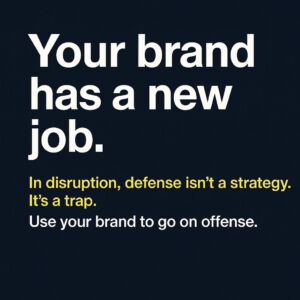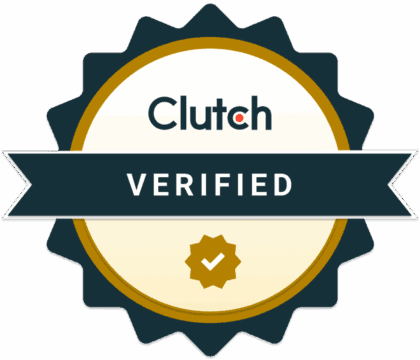Your Brand Has a New Job
When the game changes, your brand has a new job. In disruption, the right brand strategy doesn’t just defend—it leads. Here’s how to use brand as a lever for growth when everything’s in flux.
 By David Kippen, PhD | CEO, Evviva Brands
By David Kippen, PhD | CEO, Evviva Brands
At Evviva, our mantra is simple: your brand has a job to do. That job is to help people understand the value you deliver—whether that value takes the form of a product, a service, or an experience.
In stable markets, this means helping customers navigate choices and establish trust. Our role is to ensure your brand tells the right story clearly, consistently, and credibly. But in volatile markets—during economic shocks, technological disruption, or sudden shifts in behavior—your brand has a new job to do, and it needs new tools to do it.
When the Game Changes, So Must the Brand
All brands are trustmarks. That’s true in every market, in every vertical, every day. But trust is contextual. A well-known brand that assumes it can rest on past equity risks irrelevance when the foundations of value are shifting.
And right now, they are.
According to McKinsey, “Eighty percent of consumers we surveyed in March 2023 said that they’re changing their shopping behavior by changing the quantity or pack size of what they buy or switching brands or retailers to find lower costs.” We don’t have up-to-the-minute data, but it’s a safe bet that shift will accelerate in 2025.
Customers are reevaluating how they define value—not just by price, but by intangible benefits like speed, convenience, values alignment, and yes, brand. A challenger brand that offers a new equation—less cost, more flexibility, better fit—can redefine the category overnight.
When this happens, most brands reach for tactical fixes:
- Free shipping
- Discounts and bundles
- Flash sales or subscriptions
These aren’t bad strategies. But they’re often defensive and short-term. Worse, they draw attention—and budget—away from where the real opportunity lies: using disruption to go on offense.
Opportunity in Work Clothes
The great 20th Century industrialist Henry Kaiser famously said, “Problems are only opportunities in work clothes.” That’s especially true when your portfolio is in flux.
Rather than shoring up yesterday’s cash cows, it may be smarter to double down on tomorrow’s stars. Use this moment to accelerate the growth of underperforming brands that now have tailwinds—or spotlight fast-rising offerings that are already aligned with the moment.
This strategy aligns with the BCG Growth-Share Matrix, which categorizes products or business units into four quadrants: stars, cash cows, question marks, and dogs.
The Brand’s New Job
This is where brand becomes a multiplier.
Your existing reputation is a trust asset. Used wisely, it can transfer credibility to the parts of your portfolio that are best positioned for what’s next. That’s the brand’s new job: not just to reflect your current value but to redirect the attention you’ve already earned toward new sources of value you can now unlock.
As David Aaker notes, “A brand vision should attempt to go beyond functional benefits to consider organizational values; a higher purpose; brand personality; and emotional, social, and self-expressive benefits.”
Markets shift. Consumers adapt. Competitors evolve. And in every moment of disruption, the brands that act first—and act decisively—are the ones that define what comes next.
Footnote:
The BCG Growth-Share Matrix, developed by the Boston Consulting Group, categorizes a company’s business units or products into four categories based on market growth and market share:
- Stars: High-growth, high-share businesses or products. They require significant investment to maintain their position and support further growth but have the potential to become cash cows as the market matures.
- Cash Cows: Low-growth, high-share businesses or products. These are established and successful, generating more cash than they require for maintenance. They fund other segments within the company.
- Question Marks: High-growth, low-share businesses or products. They have potential but require substantial investment to increase market share. Management must decide whether to invest heavily to turn them into stars or divest.
- Dogs: Low-growth, low-share businesses or products. They may generate enough cash to maintain themselves but are not candidates for significant investment.
Understanding this matrix helps companies allocate resources effectively among their various business units or products.




















